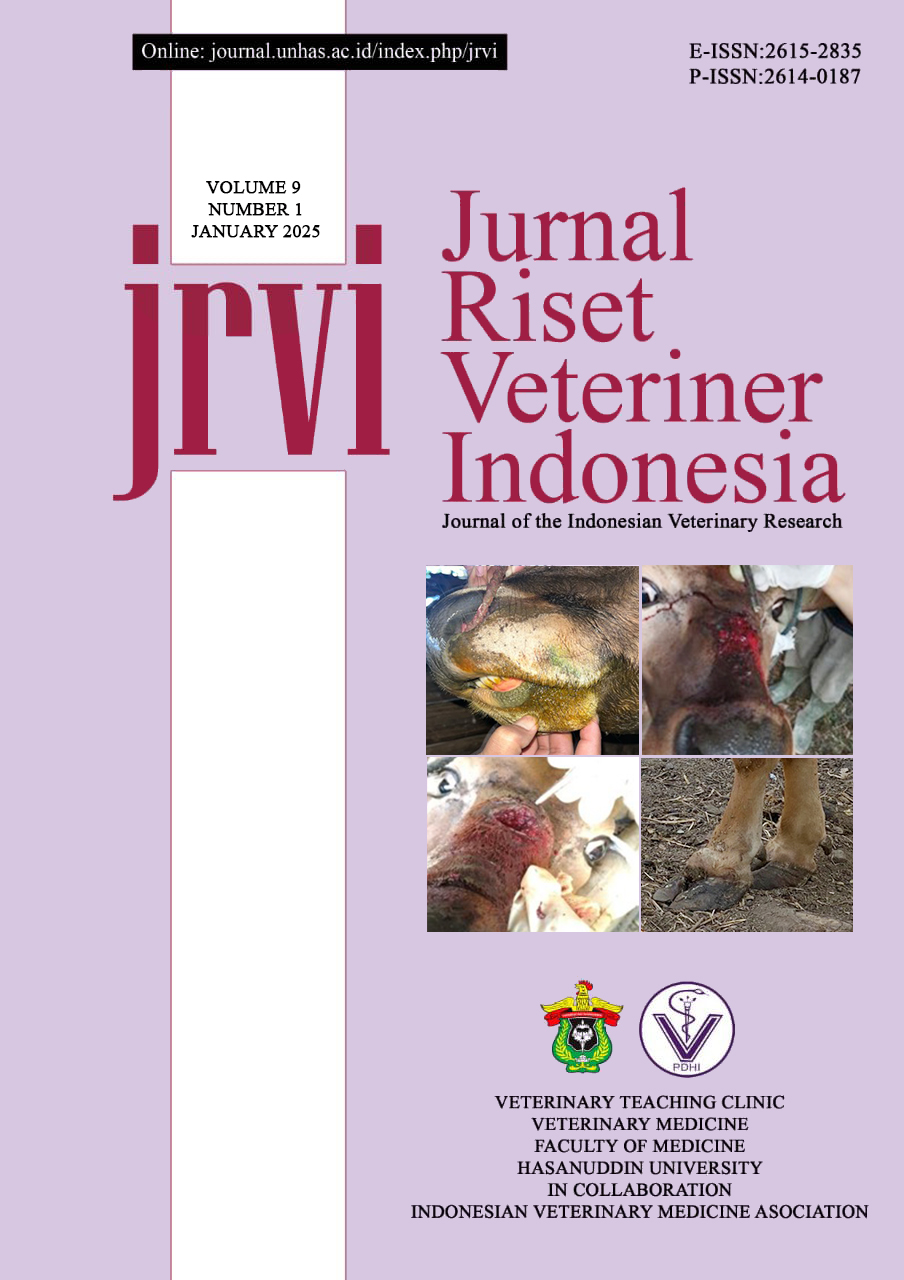Abstract
Background: The increase in the feral cat population is a problem that needs to be addressed, as this population growth is feared to increase the risk of zoonoses, or disease transmission from animals to humans. A solution to this population increase is to carry out sterilization measures.
Research Objective: To determine the effect of sterilization on the quality of life of local male cats.
Research Method: This research uses an experimental and descriptive approach, with cats as the research subjects, to examine the effect of sterilization on improving the quality of life of cats. The quality of life parameters for the cats consist of three factors: body health, ability to survive, and stress level. Body health is determined through physical and hematological examinations. The ability to survive is assessed based on the cat's age, while stress levels are measured by observing the cat's stress-related behavior after sterilization.
The results of the study showed that the body health parameters were in normal condition, as indicated by the RBC and WBC profiles being within normal levels. The survival parameters showed that all cats were able to survive, and the stress level parameters indicated that the cats were calmer and less aggressive after sterilization.
Keywords : Cats, Sterilization

This work is licensed under a Creative Commons Attribution-NonCommercial 4.0 International License.

